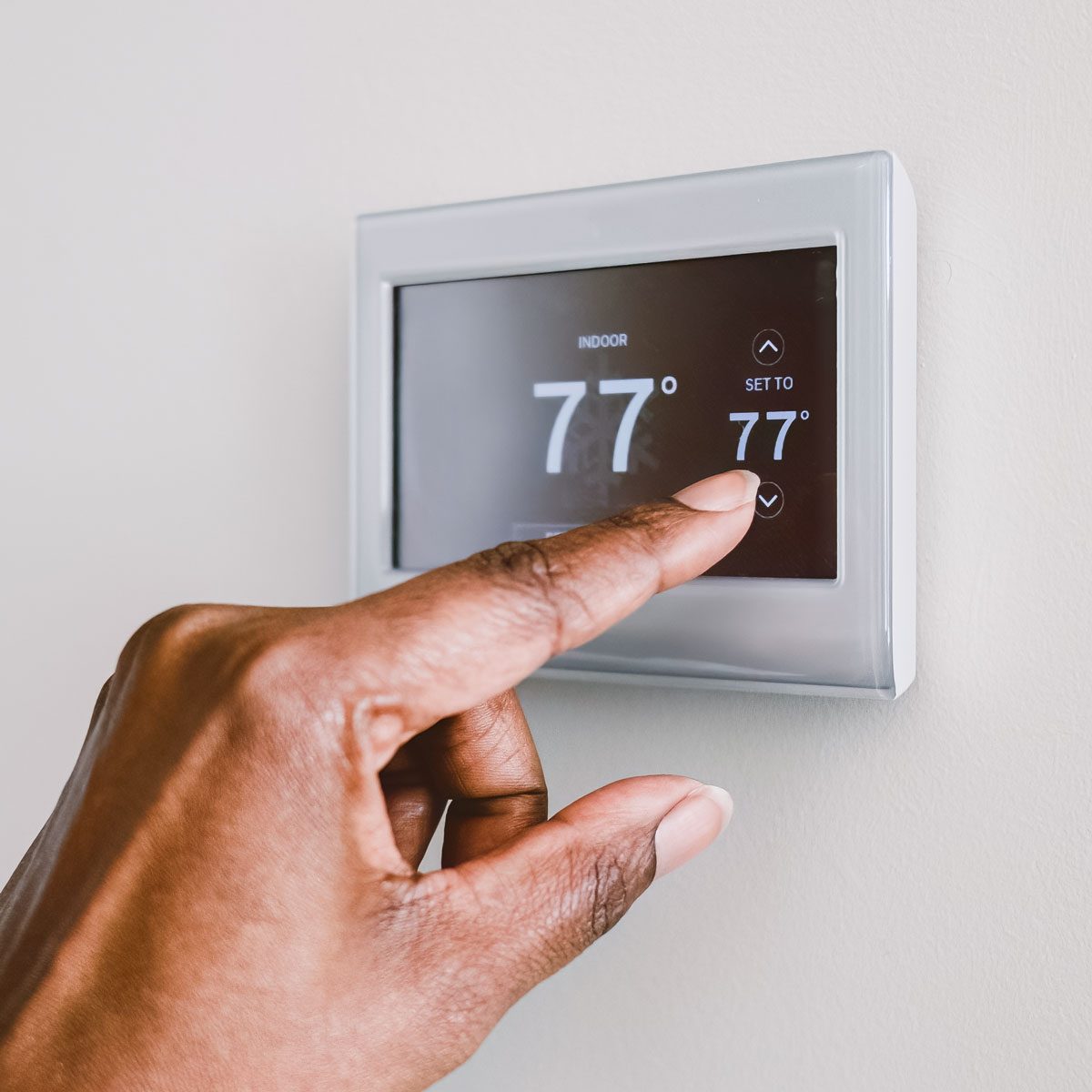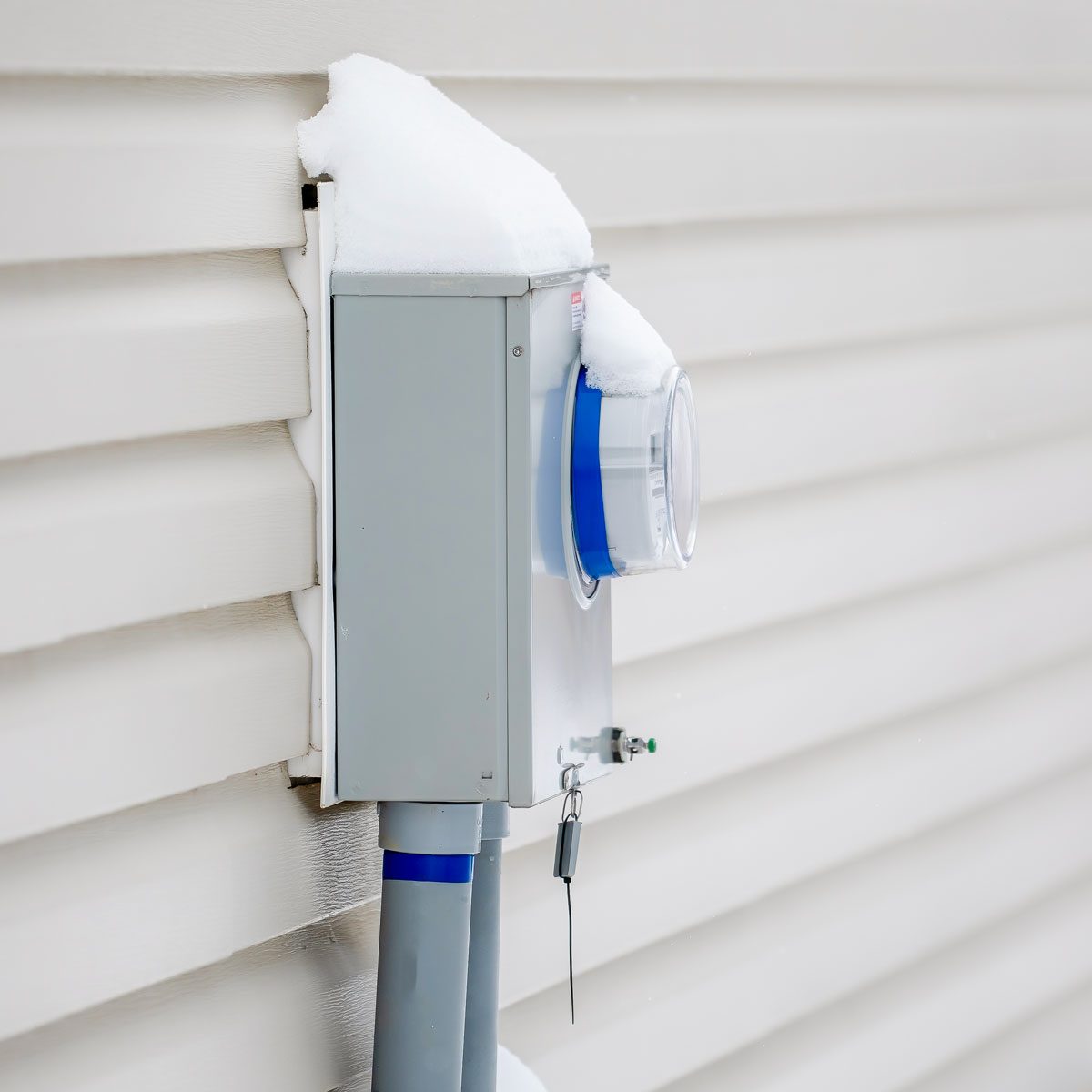Those settings are there for a reason!

The Costly Mistake You Might Be Making with Your Thermostat This Winter

It’s been a brutal winter, to put it (not so) mildly. Balmy Southern cities like Houston and New Orleans got absolutely pummeled with double-digit snowfall totals, while the Northeast and elsewhere are getting a bone-chilling Arctic blast. And that was just the past week! It’s enough to make you worry about having sufficient heat to get you to spring.
If your windows rattle from the subzero winds or you’re lighting the fireplace as soon as you wake up (just me?), you might be tempted to look for additional ways to stay warm this winter. It’s natural! No one wants to be cold inside their own home, except maybe my grandpa.
Still, as much as I like being warm, I’m also an electrician, so I understand keeping energy efficiency and electrical safety top of mind. Space heaters can be dangerous. Snuggling under a blanket doesn’t always cut it when winter winds blow. And messing with thermostat settings you don’t fully understand is a great way to end up with higher energy bills.
I talked to Alex Hepke, a heating, ventilation and air conditioning (HVAC) expert with the Frontdoor home services app, to learn the one thing you should definitely not do with your thermostat this winter. Grab a blanket and a mug of something steaming, then read on.
Get Reader’s Digest’s Read Up newsletter for more home tips, humor, travel, tech and fun facts all week long.
What is the thermostat mistake homeowners often make?
No, it’s not cranking it up too high or forgetting to turn it down when you go to bed. It’s manually activating the emergency or auxiliary heat.
Admittedly, this sounds kind of great—extra heat! In reality, it’s a terrible idea, Hepke says. To understand why, you have to first understand the concept of emergency heat.
If you have a heat pump as your primary heating source, it will have a supplemental heat source that kicks on when the system senses it’s necessary. “The emergency feature will activate when it’s too cold for the heat pump to operate on its own,” Hepke says. It might come on when the outside temperature gets too low for the pump to sufficiently heat your home or when it goes into defrost mode.
Once the emergency heat mode is activated, electric heat strips (heating elements similar to those in a toaster) inside the air handler turn on, “resulting in a warmer air supply immediately,” Hepke says. These two systems—your primary heat pump and your supplemental auxiliary heat—are designed to work together to keep your home toasty. But that won’t happen if you manually turn on this thermostat setting.
What is the issue with activating this setting?

There are a few problems with manually turning on emergency heat. But before we get into why, let’s briefly talk about how heat pumps work. It’s all about heat transfer.
In the winter, heat pumps take air from outside, extract heat from it and vent that warmer air into your home. Even the chilliest winter air contains heat energy, so heat pumps have no shortage of air to work with. (During summer, the process reverses, taking hot air from your home and pumping it outside.) When it gets really cold—below 35 degrees or so—heat pumps need help, and that’s where the auxiliary heat comes in.
Below, we’ll dive into three reasons you shouldn’t be messing with this setting.
Higher energy costs
The first big problem with turning on auxiliary heat is your soon-to-be skyrocketing electric bill. Heat pumps are popular because they use at least 50% less energy than other types of electric heat, saving about $500 per year on average in energy costs. When you turn on the emergency heat, you actually turn off the primary heat pump. Until you switch the setting back, you’re heating your house with the electric heat strips alone—and that’s going to cost you.
“Running just the auxiliary heat setting is very expensive and not cost effective,” Hepke says. That’s partly because of an electrical concept called resistance. Electric heat strips (as well as the heating elements in toasters, ovens and furnaces) heat up because they resist the electrical current running through them. In contrast, heat pumps transfer heat from outside your home to inside, which takes considerably less energy.
“Electric heat strips use a lot of electricity to get hot, so your electric bill will be significantly higher,” Hepke says.
System inefficiency
Another reason to avoid manually turning on the emergency heat is that your heat pump just isn’t designed for it. “Your system is programmed to only use the auxiliary heat when it’s too cold or when it’s in defrost mode,” Hepke says. These are temporary situations, not long term, and the heat pump knows if and when it needs the boost. When you turn on the auxiliary setting, you’re overriding the brains of the system and defeating the purpose of having a heat pump.
Hepke says it’s better to allow your HVAC system to run as designed, “with all modes of heating working in unison as intended.” When asked whether it’s ever appropriate to turn on the emergency heat, Hepke is blunt: “No, only if your heat pump has failed.”
So save the auxiliary heat for true emergencies, like if you’re waiting for an HVAC technician and have no primary source of heat.
Wear and tear
Hepke says using the auxiliary heat typically doesn’t harm your heat pump. Electric heat strips provide a hotter supply of air than the heat pump alone, but the system is ready for it. Using supplemental heat as intended “has no negative effect on the HVAC system itself,” Hepke says.
It’s still not a good idea to turn it on manually. Heat pump manufacturers are clear: It’s not necessary and can even be detrimental. You’re putting the burden of heating your entire home on something that’s meant to be used temporarily. Even if you’re not doing it for months or years at a time, it could contribute to wear and tear on your system.
How much money are you wasting by doing this?
It depends on where you live, the cost of your electricity and other factors, but purely resistive heat, like the heat strips in a heat pump that your auxiliary heat uses, are 100% efficient in that every bit of energy introduced to them turns into heat. Heat pumps, on the other hand, are 300% efficient, putting out three times more heat than it takes to run them.
That means you are spending three times as much money to run your heat pump in auxiliary mode.
Do all thermostats have this setting?
No. Hepke says only thermostats that control a heat pump will have this setting, which makes sense since other heating systems, from gas furnaces to hot-water radiators, do not have (nor typically require) a supplemental heat function.
Do you have to turn off this setting if you activate it?
According to Hepke, that’s an affirmative: “If you turned it on,” he says, “you need to turn it back off.”
Don’t worry—that won’t physically tax the system. But it will save you money by reverting the system to its regular (and cheaper) setting. See, during regular operation, the heat pump cycles back and forth between settings as needed, but when you manually put the system into emergency heat mode, it stays there until you change the setting.
What should you do if your house is cold?
Did you know that the ideal indoor temperature is 68 degrees? I swear my house in Texas is colder than my former Minnesota home, and that thing was 120 years old. No comment on the skills of the builders, but if you have the same problem, here’s what to do:
- Seal cracks and drafts. My front door leaked air like a sieve. After hanging a blanket over the gap for a few weeks, I sealed the door with weather stripping, and it got much better.
- Close unneeded vents. My living room has high ceilings, and it’s 10 times warmer upstairs than down. Closing vents upstairs helps.
- Switch your ceiling fans. Fans are directional, and they should push heat downward in winter. As the weather cools in the fall, switch the direction of your fans to spin clockwise.
- Add insulation. When you bought your house, did the inspector tell you to add insulation in the attic? Did you? It’s a good idea.
- Call a technician. Your heat should keep you warm. If it’s not cutting it, ask an expert what’s wrong.
About the expert
|
Why trust us
At Reader’s Digest, we’re committed to producing high-quality content by writers with expertise and experience in their field in consultation with relevant, qualified experts. We rely on reputable primary sources, including government and professional organizations and academic institutions as well as our writers’ personal experiences where appropriate. For this piece, Ally Childress tapped her experience as a longtime journalist and licensed electrician to ensure that all information is accurate and offers the best possible advice to readers. Read more about our team, our contributors and our editorial policies.
Sources:
- Alex Hepke, virtual HVAC expert at Frontdoor; email interview, Jan. 23, 2025
- U.S. Department of Energy: “Electric Resistance Heating”
- U.S. Department of Energy: “Heat Pump Systems”
- Energy Star: “How Does a Heat Pump Work?”
- Massachusetts Institute of Technology: “Everything You Need to Know About the Wild World of Heat Pumps”























